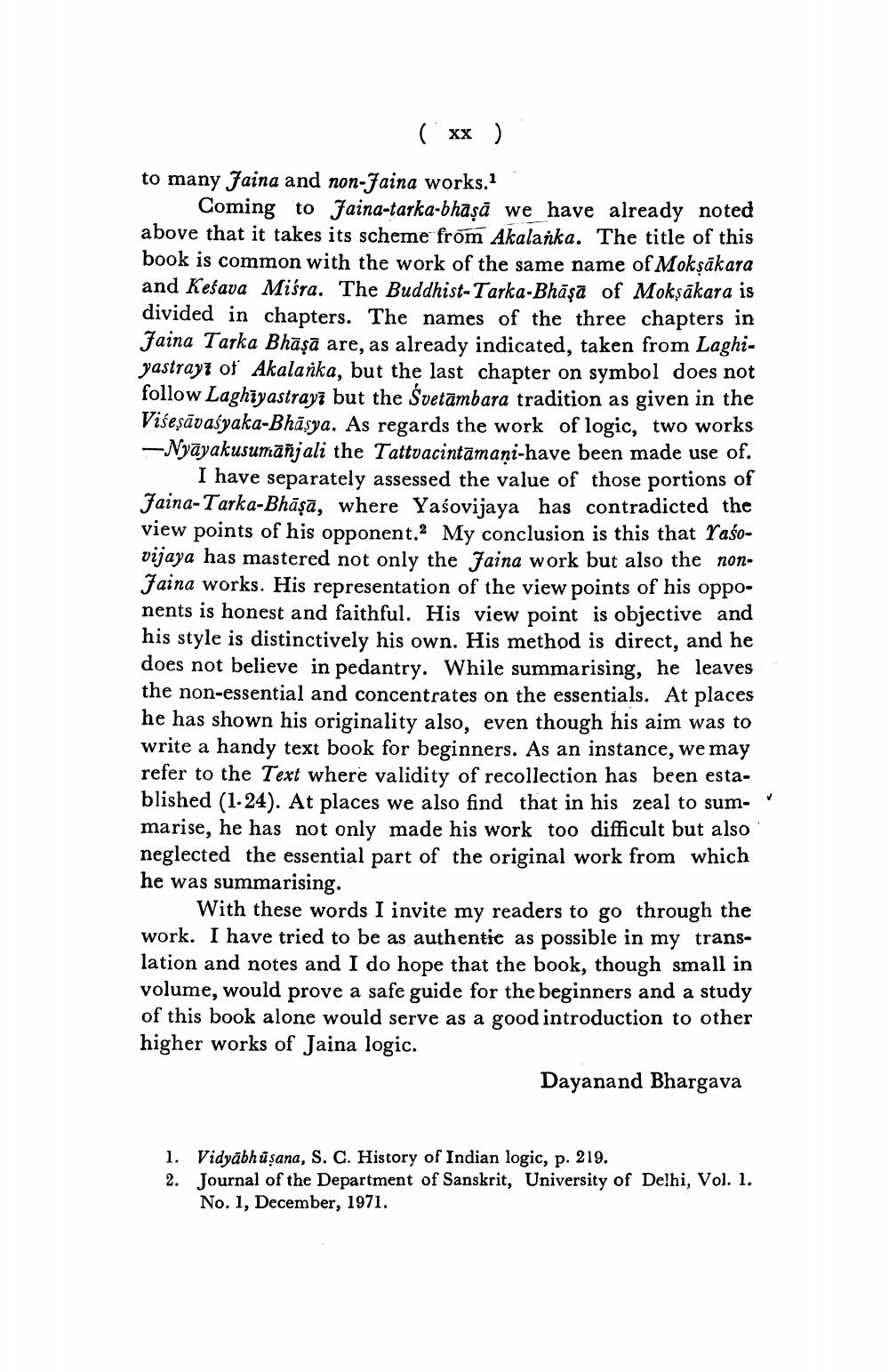________________
( xx) to many faina and non-Jaina works.
Coming to Jaina-tarka-bhaşā we have already noted above that it takes its scheme from Akalanka. The title of this book is common with the work of the same name of Mokşākara and Keśava Miśra. The Buddhist-Tarka-Bhāşā of Mokşākara is divided in chapters. The names of the three chapters in Faina Tarka Bhāṣā are, as already indicated, taken from Laghiyastrayz of Akalarka, but the last chapter on symbol does not follow Laghiyastrayı but the Svetāmbara tradition as given in the Višeşāvasyaka-Bhāsya. As regards the work of logic, two works -Nyāyakusumāñjali the Tattvacintāmani-have been made use of.
I have separately assessed the value of those portions of Jaina-Tarka-Bhāṣā, where Yasovijaya has contradicted the view points of his opponent.? My conclusion is this that Yaśovijaya has mastered not only the Jaina work but also the nonJaina works. His representation of the view points of his opponents is honest and faithful. His view point is objective and his style is distinctively his own. His method is direct, and he does not believe in pedantry. While summarising, he leaves the non-essential and concentrates on the essentials. At places he has shown his originality also, even though his aim was to write a handy text book for beginners. As an instance, we may refer to the Text where validity of recollection has been established (1.24). At places we also find that in his zeal to summarise, he has not only made his work too difficult but also neglected the essential part of the original work from which he was summarising.
With these words I invite my readers to go through the work. I have tried to be as authentie as possible in my translation and notes and I do hope that the book, though small in volume, would prove a safe guide for the beginners and a study of this book alone would serve as a good introduction to other higher works of Jaina logic.
Dayanand Bhargava
1. Vidyābhūşana, S. C. History of Indian logic, p. 219. 2. Journal of the Department of Sanskrit, University of Delhi, Vol. 1.
No. 1, December, 1971.




